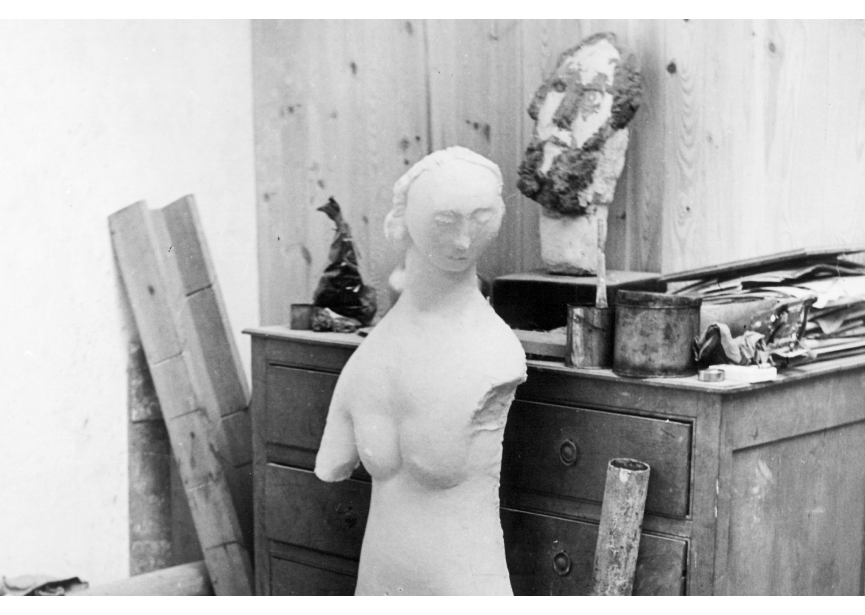Constant Permeke. Down to earth

Constant Permeke was over fifty years old when he turned to a new medium. He was already a successful painter with a large oeuvre to his name. Exhibitions followed one another at home and abroad. Feverishly, he continued to experiment. The life-size figures he was drawing and painting at the time encouraged him to step away from the pictorial plane and venture into sculpture. Permeke initially modelled figures in clay, no bigger than the palm of his hand. Two years later – in 1939 – he filled the Centre for Fine Arts in Brussels with an impressive selection of monumental sculptures.
Many modernist artists who dedicated themselves to painting also created sculptures, including Paul Gauguin, Edgar Degas, Amedeo Modigliani, Henri Matisse, Pablo Picasso and Rik Wouters, to name but a few. Permeke was particularly inspired by the French sculptors Ossip Zadkine and Aristide Maillol and Belgium’s Oscar Jespers. From Maillol, he inherited the timeless human forms, and from Zadkine, the expressionist imagery and progressive approach. Like Jespers, Permeke was interested in African art, as evidenced by his preference for simplified forms.
Permeke’s sculptures are as powerful as they are intimate. Qualities that are augmented by their rough and unfinished nature. Clay formed the basis of almost all his sculptures. This resilient earthy material could be easily modelled and readily lent itself to his bold experiments. Permeke opted for speed, agility and spontaneity, much like Picasso. He subsequently cast his modelled works in plaster, artificial stone or bronze, or fired them to produce terracottas. The artist often created versions of the same form in each of these materials. He would vary the forms slightly, give them different patinas or continue to work the casts with a hammer and chisel. The human figure is a recurrent motif in his sculptural oeuvre, be it as a sower, mother and child, ordinary labourer, naked woman or the mythical Niobe. Drawings, paintings and sculptures complement one another and are of equal importance. One creation gave rise to the next, in endless variations.
It is also striking that Permeke destroyed many of his sculptures, even after they had been exhibited. Over the past three years, Mu.ZEE has conducted detailed scientific research into Permeke’s sculptural techniques using the museum’s vast collection of sculptures and the many casting moulds in its possession. The research – supported by the Cultural Heritage Decree – sheds new light on the artist’s working methods, his material choices and the coherence between the multiple versions of each work.
The Down to Earth exhibition tells the story of Constant Permeke as a sculptor and, via some forty artworks, links his three-dimensional oeuvre to his paintings and drawings. His contemporaries Aristide Maillol, Ossip Zadkine, Oscar Jespers, Käthe Kollwitz and Ernst Barlach are also represented.
Curator: Inne Gheeraert
Sculpture research: Inneke Schwickert
Archival research: Wendy Van Hoorde
With thanks to Joost Declercq
With the support of
Visit Flanders
Flanders – Cultural Heritage Decree
National Lottery
Delen Private Bank
Prices & Rates
Plan your visit
Opening hours
The museum is open from 10am to 5.30pm.
Closed on Mondays, and on December 25 & January 1.
>> Would you like a guided tour? More info here.
Or tel 059 24 21 91 (for groups)


